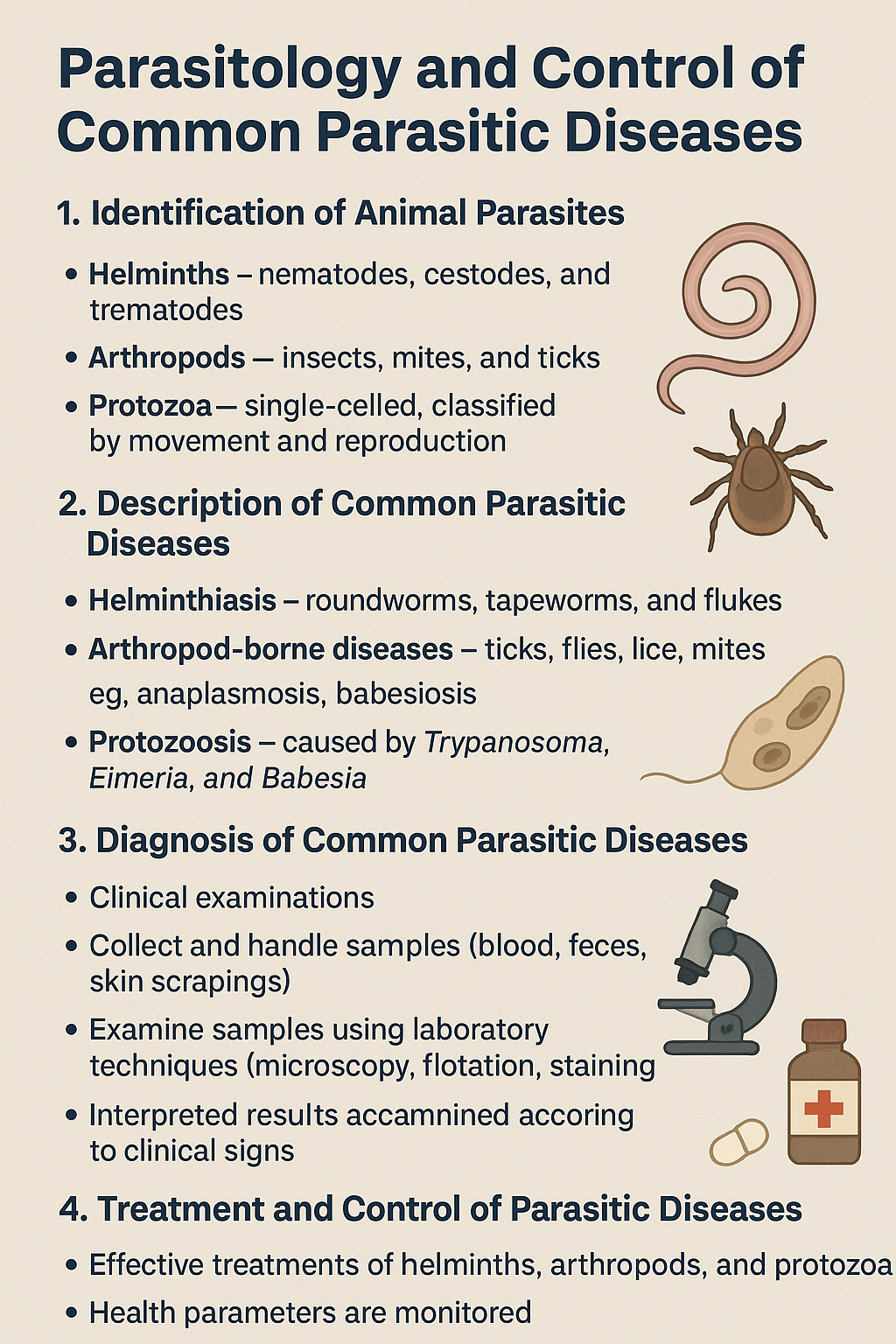Enrolment options
This module focuses on identifying, diagnosing, and managing animal parasites to promote animal health and productivity. It covers the major groups of parasites—helminths, arthropods, and protozoa—and their associated diseases.
1. Identification of Animal Parasites
Learners study the main classes of parasites:
-
Helminths – including nematodes, cestodes, and trematodes, described by their structure, lifecycle, and mode of infection.
-
Arthropods – such as insects, mites, and ticks, described by their morphology, development, and role as vectors.
-
Protozoa – single-celled parasites classified based on movement (flagella, cilia, pseudopodia) and mode of reproduction.
2. Description of Common Parasitic Diseases
Students learn about major parasitic diseases:
-
Helminthiasis – caused by parasitic worms like roundworms, tapeworms, and flukes.
-
Arthropod-borne diseases – caused or transmitted by ticks, flies, lice, and mites (e.g., anaplasmosis, babesiosis).
-
Protozoosis – caused by protozoan parasites such as Trypanosoma, Eimeria, and Babesia.
3. Diagnosis of Common Parasitic Diseases
The module trains students to:
-
Conduct clinical examinations following proper procedures.
-
Collect and handle samples (blood, feces, skin scrapings, etc.) according to protocols.
-
Examine samples using laboratory techniques (microscopy, flotation, staining).
-
Interpret results accurately based on clinical signs and lab findings.
4. Treatment and Control of Parasitic Diseases
Learners gain practical skills in:
-
Applying effective treatments specific to helminths, arthropods, and protozoa.
-
Monitoring animal health during and after treatment.
-
Implementing biosecurity and preventive measures such as sanitation, vector control, vaccination, and isolation to reduce disease spread.

- Teacher: NIYONZIMA Fiston
